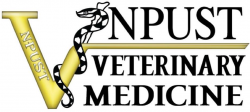Cheng-Shu CHUNG1, 2


1Department of Veterinary Medicine, College of Veterinary Medicine, National Pingtung University of Science and Technology, Pingtung, Taiwan
2Veterinary Medical Teaching Hospital, National Pingtung University of Science and Technology, Pingtung, Taiwan
Traumatic abnormalities and neoplasia are common maxillofacial surgical diseases in dogs and cats. Maxillofacial traumatic abnormalities may result from animal bites, vehicular accidents, blunt force traumas, or falls from height. However, they are infrequently encountered during bone reconstruction in clinical practice in Taiwan because of the life-threatening consequences for companion animals due to their relatively small size, sustaining high-velocity impact injuries. Feline high-rise syndrome may result in maxillofacial and temporomandibular joint injuries, and closed reduction or condylectomy could be performed with satisfactory results. Neoplasia is responsible for the majority of maxillofacial surgeries performed in our hospital. Partial maxillectomy and partial/total mandibulectomy are common surgical procedures applied for treatments. Although postoperative complications may include malocclusion or tongue protrusion, cosmesis and function are usually good for the dogs. Some cats may refuse to eat after the procedure, requiring tube feeding.
Advancement in maxillofacial surgery in veterinary medicine remains ongoing, and the challenges may differ from those observed in human medicine.

